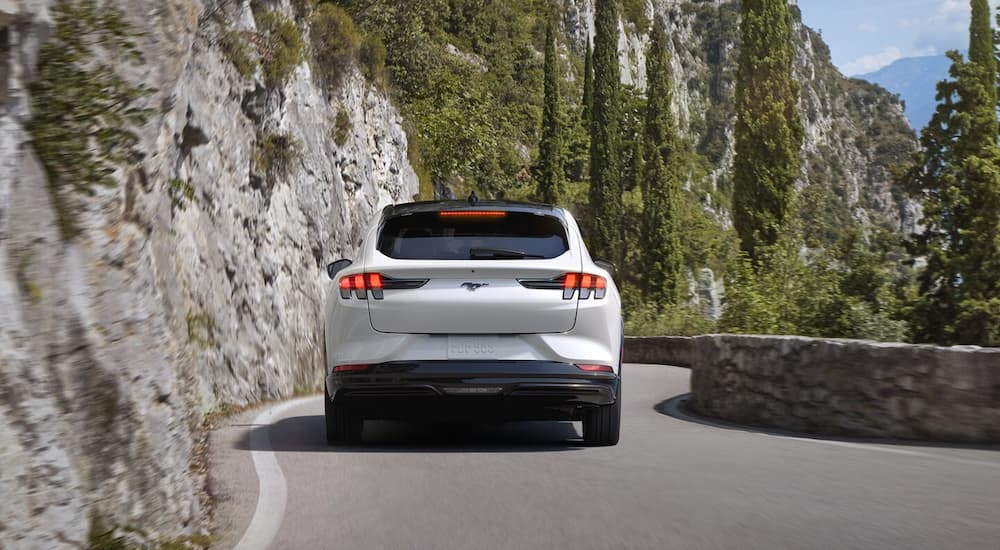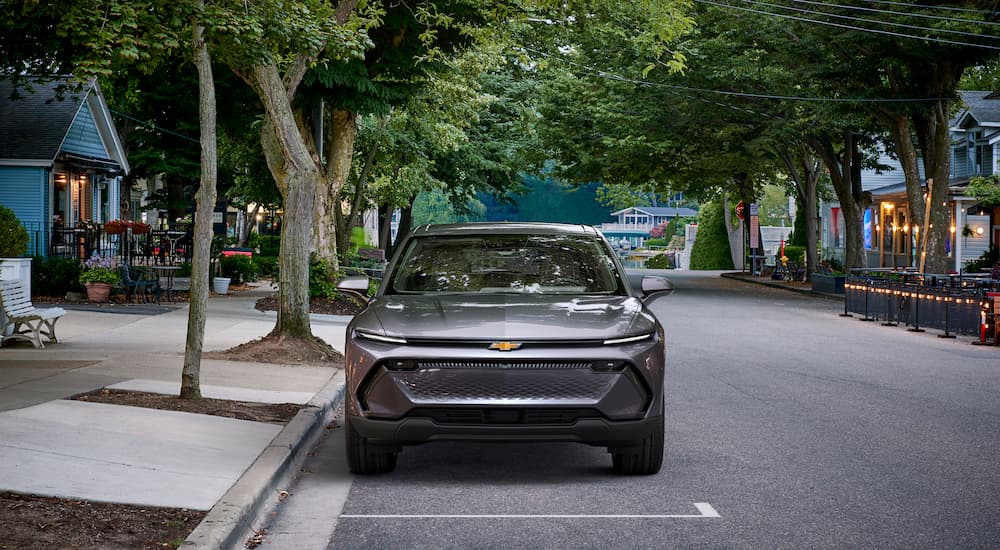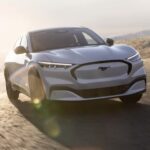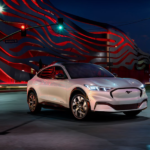As I’ve looked at the EV market right now, what’s on the horizon, and Chevy’s offerings in particular, this is the question I’ve been left with. Obviously, Chevy and Ford are major competitors with a rivalry that goes back more than a century, so it’s only natural that we see Chevy want to compete with the vehicles you can find at a Ford dealer. I’m not sure that’s what we’ve actually seen so far, at least when it comes to the Ford Mustang Mach-E and the kinds of EVs that Chevy is ready to unleash this year. There’s certainly an argument to be made that the Silverado EV has been designed to compete with the Ford F-150 Lightning, but I don’t know that Chevy has taken direct aim at the Mustang Mach-E just yet.
Let’s Look at the Mustang Mach-E
First, let’s look at what Ford has brought to the proverbial table with the Mustang Mach-E. It’s undoubtedly an impressive piece of machinery. One of the ways that Ford has taken a dominant approach to the EV market is with how much power they’ve packed into the Mustang Mach-E and the wide range of options available for it. Two battery packs are available, a standard 72 kWh one and a long-range 91 kWh option, along with a single or dual-motor setup. You can get all of these configurations in any combination, so you have four different approaches to EV performance with a single SUV.
The starting setup has the 72 kWh battery and a single motor that delivers 266 hp and 317 lb-ft of torque. This battery can also come with two motors. This configuration is good for 290 hp and 427 lb-ft of torque. For folks looking for a more exhilarating experience, the larger 91 kWh battery offers 311 hp and 428 lb-ft of torque with a single motor, and the dual-motor configuration delivers 346 hp and 428 lb-ft of torque. Those are four great options that can match what’s out there from just about every other company, plus it can go for more than 300 miles with a full charge and the long-range battery.
What really sets the Mustang Mach-E apart from many other EVs out there and puts it ahead of most of them is the GT model. The Mustang Mach-E GT has the large 91 kWh battery, dual motors, and a performance tune that offers 480 hp and more than 600 lb-ft of torque. That’s almost double the power of the starting setup for this SUV, and it’s undeniably the way to go for anyone looking for the most pulse-pounding driving experience possible with a Ford EV. Few other EVs can come close to this, and it helps the Mustang Mach-E surpass competitors like the Tesla Model Y.
What About Chevy’s Lineup?
How has Chevy answered the challenge that the Mustang Mach-E has thrown down? I’d say they really haven’t. To understand why that is, let’s look at the EV models Chevy is bringing to the road this year. Besides the Silverado EV pickup, Chevy is unleashing two electric SUVs this year: the Blazer EV and Equinox EV. Chevy isn’t exactly hitting it out of the park when it comes to unique model names for their EVs, but there’s something to be said for simply communicating what something is to their customers. While the Mustang Mach-E is an all-new electric-only design, the Blazer and Equinox are existing models in Chevy’s lineup, now offering electric powertrains as well as gas.
Mustang Mach-E vs. Chevy Equinox EV
Like the Mustang Mach-E, the Chevy Equinox EV is a compact SUV. That makes it Ford’s direct competitor, and it leaves a lot to be desired when going head-to-head. With its standard single-motor setup, the Equinox EV offers 213 hp and 236 lb-ft of torque, which is fine but certainly not amazing. A dual-motor configuration helps improve that with 288 hp and 346 lb-ft of torque, surpassing the Mustang Mach-E’s starting option. But if you look at any Mustang Mach-E model beyond that, including the standard battery with a pair of motors, it immediately leaves the Equinox EV in its dust. Chevy doesn’t come close to delivering what Ford brings with the Mustang Mach-E, and I don’t think they’re trying to.
There’s also the fact that the Equinox EV is priced a lot lower than the Mustang Mach-E. Looking at the 2023 model (there’s no official price for the 2024 Mustang Mach-E just yet, even though it’s already 2024), it starts at $39,895 for the standard Select model, after a recent decrease from $42,995. By comparison, the 2024 Chevy Equinox EV will start at $34,995 when it launches this year. That’s a lot less than the 2023 model was, and it is still significantly less than Ford’s 2023 Mustang Mach-E right now. All this makes it hard to argue that these two SUVs are in the same class.
Mustang Mach-E vs. Chevy Blazer EV
The Blazer EV is a midsize model, putting it a size class higher than the Mustang Mach-E. It seems largely aimed at families looking to leave the gas pump behind. It has everything you’d expect in a modern EV: fast charging, impressive range, and innovative technology.
In general, like the Equinox EV, the Blazer EV also doesn’t come close to the kind of power Ford offers. Most of its models have 288 hp and 333 lb-ft of torque, which doesn’t propel this larger midsize offering as quickly as the compact Mustang Mach-E. However, the tremendous exception to this is the Blazer EV SS, a performance-focused version that offers 557 hp and 648 lb-ft of torque. The SS accomplishes this with its Wide Open Watts system. This is essentially launch control for an EV, boosting power significantly for initial acceleration, which enables the Blazer EV SS to go from 0 to 60 mph in less than 4.0 seconds.
This can compete with the Ford Mustang Mach-E GT model that clocks in at 3.5 seconds to hit 60 mph. Exactly how close the Blazer EV SS comes isn’t known yet, since Chevy hasn’t released an exact 0 to 60 time. The Equinox EV does not have a comparable SS model, and there’s no sign that it will any time soon. That’s why I say Chevy isn’t trying to go head-to-head with the Mustang Mach-E and everything it offers.
How Does Chevy Move Forward?
Despite not having a true answer to the Mustang Mach-E, I’m not sure Chevy needs to change direction, at least not until their two EV SUV offerings hit the market and see how things shake out. The standard Equinox is Chevy’s second most popular model after the Silverado. They’re going for wide-range appeal with the Equinox EV, just like the standard Equinox, which seems like the right move to me. The Blazer EV SS appeals to drivers looking for performance from their EV SUV above anything else. On the other hand, Ford keeps things simple with one of the most impressive SUVs on the road, EV or otherwise, in the Mustang Mach-E. I think they’ll need to respond with a more accessible EV of their own, particularly once Chevy has these two and the next-generation Bolt EV on the market. The upcoming Explorer EV model could be that, but for now, I feel like both companies are aiming to meet the different needs and desires of drivers. That’s a win for all of us.






